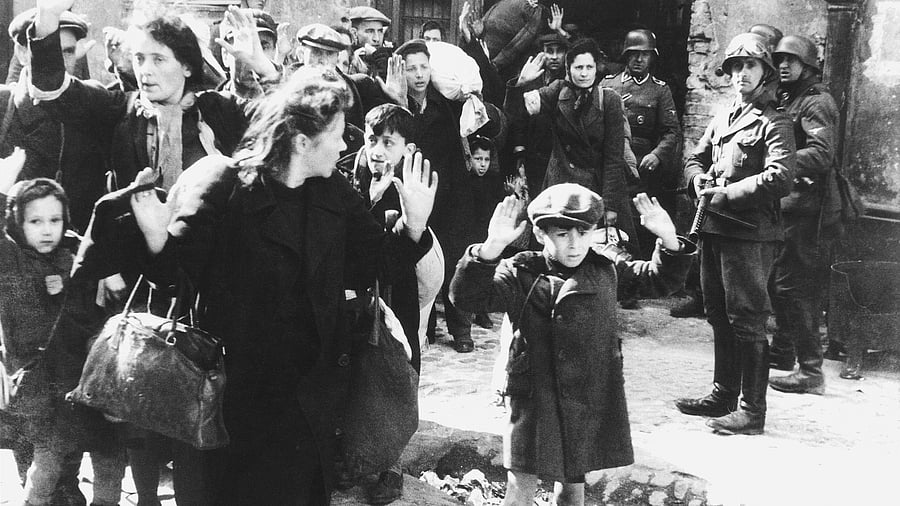
Susan Sontag's work on women and the Holocaust explores the intersections of gender, power, and memory, particularly in the context of the Holocaust and its aftermath.
IMAGE COURTESY WIKIPEDIA
One of the most influential cultural critics of the 20th century, Susan Sontag noted the following on style and an artwork’s subject matter: “When the material of art is conceived of as ‘subject matter’, it is also experienced as capable of being exhausted. And as subjects are understood to be fairly far along in this process of exhaustion, they become available to further and further stylisation.” If stylisation is a work of art, seen as “distinct from style” per Sontag, then Benjamin Moser’s Sontag: Her Life (Penguin, 2020) comes as close to that.
This biography won Moser a Pulitzer in 2020. While Sontag considered her “fortunes and misfortunes” to have no “particularly exemplary character”, her exploitation of her mental faculties did distinguish her from her peers, which is something Moser champions in his book. At the Jaipur Literature Festival, in a conversation with DHoS, the American author and translator discussed the remarkable life and works of Sontag. Edited excerpts:
As a biographer, what challenges did you face with sifting through the expansive works of Sontag?
Well, you said it: expansive. I mean, it was a huge archive. Her journals alone run a hundred volumes. Then, she wrote several books. She knew everybody; she went everywhere. For example, I was at this dinner in Delhi, and this woman said, ‘Oh, we had Susan at our house in Delhi in 1983.’ And I didn’t even know if she ever came to India. So, the challenge was not only to have a network of contacts and contextualise her difficult body of work but also to have a sense of politics, history, and philosophy. Because reading her is like getting a degree from a university. There was so much to learn. There are only a few writers from whom you can
learn this much.
You said that in her case, it wasn’t the famous works but the ‘little stuff’ that was revealing. Could you share a few that stumped you?
I had the authorisation to read the private diaries, which have been in a separate, secret vault at the University of California, Los Angeles (UCLA) for 50 years or something. I expected them to be really shocking, but they weren’t so shocking. They weren’t any different from other stuff, which made me wonder why all this was in a special archive, kept away from the public.
Then, in the book, you note that Sontag was deeply impacted by the Holocaust visuals and the acute pain she felt. As her life was also punctuated by pain and trauma, could you help share how this incident transformed her?
When some of the first pictures that came out of the Holocaust reached the United States, Sontag was 12. There’s something to these pictures that you remember them for the shock and horror they invoke. They are not only morally uncomfortable, but they’re also capable of inducing physical discomfort. You feel it in your stomach. Because the people in these pictures didn’t volunteer to take their clothes off and consented to what happened to them, you feel dirty looking at them. There’s this tension as you’re confronted with the horrors of the world. You can’t look away when you see them, but you can’t look at them. And I think that’s a theme that goes throughout [Sontag’s] entire work.
Besides libido and ego, Sontag centralised bodily experiences and body politics. How do you think her works and especially her ‘against storytelling’ stand were perceived at the time?
To address the last part first, she wrote these novels that are totally
crazy. People love her non-fiction; they don’t like her fiction much because they’re insane, as they have no narrative, plot, or real characters. But these are the things that we want to read in a novel, right? I was very confused reading them for a long time until I watched films from that time. And I learnt that everyone was trying to reinvent the world. Or so they thought — a very 19th-century thing. But then, how do you dismantle narrative, structure, character, plot, etc.? So, these novels are unpleasant to read, but you know, it’s fun to explain them 60 years later. And I’m quite unsure if these novels could be published now because in America, at least, literature is becoming very repetitive and conventional. Regarding the reception bit: back then, people weren’t as negative as they are about her works now, which makes sense because people want the same Netflix series or Bollywood movie.
Everyone is conforming to something, but Sontag was this real countercultural, aggressive figure.